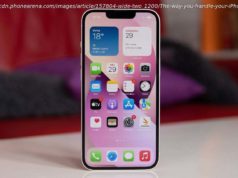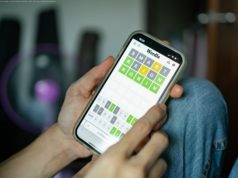We explore how apps, wearables and sensors are being used to both plan and prevent pregnancies worldwide.
From thermometers to charts to apps to complicated maths, for women, tracking their cycle to work out when best to conceive, and when to avoid conceiving, is nothing new.
And now, thanks to the rise in tech designed to make fertility tracking at home easier and more accurate than ever, more and more women are entrusting the planning and prevention of pregnancy to an app and a thermometer.
In many ways this is a hugely positive development, providing women all over the globe with more knowledge and insights into how their bodies work. Not only is this empowering, it gives them a better chance of making good decisions without the need to sit in a doctor’s waiting room, wait ages for tests, or pay for advice.
Rebecca Simmons, Assistant Professor and Sexual & Reproductive Health Researcher, explains: “Personalized medicine – this idea that we can tailor broader health information to ourselves for better outcomes – is really driving people to have a better understanding of their own bodies with respect to everything, from fitness to nutrition to chronic disease.”
“I think that fertility technology and fertility-awareness-based methods really align with this larger trend.”
But, as you may expect, this new wave of fertility tracking tech doesn’t come without its issues, from lack of regulation and steep prices through to dubious claims and even unwanted pregnancies.
For example, popular fertility tracking app Natural Cycles, which is claimed to be able to plan and prevent pregnancy, has come under fire for allegedly leading to a number of unplanned pregnancies.
So do the benefits outweigh the risks? Or are people jumping on board this particular quantified self bandwagon far too early?
The Natural Cycles app highlights red fertile days or green infertile days
Fertility tracking tech is a fast-growing space, and there are a number of options readily available, from in-ear wearables through to simple apps.
Most of the devices collect data about Basal Body Temperature (BBT), which is your body’s temperature when at rest and has long been used as an indicator of fertility because it fluctuates throughout a woman’s cycle.
The approach to taking your BBT is varied. For example, Ava is a wrist-bound wearable aimed at those looking to plan pregnancy, which tracks temperature as well as a range of other physiological markers, from stress to sleep.
Similarly, TempDrop is a wearable that can be worn with an armband or directly on the skin of your arm throughout the night and, like Ava, it collects a range of readings. In comparison, Yono is an in-ear basal thermometer that’s worn all night to continually track BBT.
Then there are oral thermometer methods, with many (but not all) claiming they can be used to plan as well as prevent pregnancy. For example, Daysy is a thermometer that teams up with the Daysy app to tell you when you’re likely to be fertile and infertile. The Wink is an oral thermometer that pairs with the Kindara app and sends information to it via Bluetooth, and is claimed to be a good indicator for those wishing to plan and prevent pregnancy.
Then there’s Natural Cycles, which is a popular app and thermometer combo that’s used to both plan and prevent pregnancy. Importantly, Natural Cycles is the only product mentioned here that’s certified as a valid method of contraception in Europe (outside of Europe it’s only intended to be used as a form of fertility monitoring).
Then there’s Dot, which also claims to be able to plan and prevent pregnancy just by tracking the dates of a woman’s period and not by taking their temperature.
Finally, there are also a few really popular apps, like Clue and Glow, that don’t require the woman to take her temperature and don’t promise to be solid options for planning or preventing pregnancy, but they do allow users to track their cycle and prompt them to learn more about how their body behaves throughout the month, from moods to reaction to medications.
But that’s just the beginning. More apps are hitting the market all the time, more startups are producing wearables, and more BBT-based solutions are trying to drum up mainstream appeal. It’s a fascinating, fast-growing space. But with such a huge range of products racing to market, can we really trust them?
While some of these apps and wearables claim to be able to keep track of infertile days, only a few state that they can confidently be used to prevent pregnancy. Even then the small print ensures that most can’t be held accountable for any unplanned pregnancies, and should only be used as a guide.
And although this space is still largely unregulated, the experts we spoke to expect it to continue to grow. Simmons explains that “demand for app-based methods is occurring because existing methods aren’t meeting the needs of all women”.
“The vast majority of development around contraception has been mostly tinkering with the hormonal dosages/delivery mechanisms of existing contraceptive methods, which is fine, but doesn’t address the needs of the subset of women for whom hormonal methods either aren’t possible or desired,” Simmons adds.
“As more research emerges on some of the potential negative side effects of hormonal contraception (for example depression, decreased sexual libido), women and their partners are looking for other ways to prevent pregnancy. These apps are, for better or worse, filling some of that existing demand.”
Natural Cycles faced criticism after being blamed for a number of unplanned pregnancies in Sweden. But the team behind the app have explained that as user numbers rise, so will unplanned pregnancies.
That’s because it’s 99% effective with ‘perfect use’ and 93% effective with ‘typical use’ according to the Pearl Index, which is a commonly used indicator that estimates the number of unwanted pregnancies with a contraceptive method if 100 women use it over a year. So with typical use you’d expect seven women using Natural Cycles to become pregnant over 12 months.
And while 93% may not sound particularly comforting, according to a recent study of contraceptive methods, the Pearl Index for the male condom ranges from 98% effectiveness with perfect use to 82% with typical use over time, and the combined pill ranges from more than 99% effectiveness with perfect use to 91% with typical use.
A detailed look at the Natural Cycles app and the data it provides
Although this points to Natural Cycles being more effective than the male condom (although bear in mind this is based on limited studies, as the space is still so new), tech-based contraception does need to be approached with caution, largely because we’re just not used to using it yet.
For example, the ‘perfect use’ of Natural Cycles requires a woman to take her temperature each morning at a similar time before they get up, and works best for those with regular cycles; and if you’re ill or hungover that may affect your results. This means that while in theory ‘perfect use’ sounds easy, in practice it may not be.
That doesn’t mean to say Natural Cycles isn’t a valid option for those who’ve tried other methods and are committed to sticking to the instructions, but it’s not perfect and, crucially, won’t protect against STDs.
We asked Rebecca Simmons what she thinks of using an app instead of the pill. “There’s very little research right now on the efficacy of existing fertility apps and other technologies. For better or worse, science is slow and technology is fast,” she explained.
“There needs to be a better balance between the two fields, to prevent women from being harmed and to improve consumer confidence in this field. For now, women who are choosing to use fertility technology as a way to prevent pregnancy should be extremely careful in choosing which apps to trust with that type of responsibility.”
Although we can’t ignore the fact that this tech is by no means perfect or designed for everyone, that shouldn’t detract from its huge potential.
While large-scale numbers being hard to come by at this point, user stories from many of the fertility tech companies we spoke to point to huge success rates in using these apps and devices to plan for pregnancy. We spoke to Lea Von Bidder, the CEO and Co-founder of Ava, who explained that because the Ava wearable tracks nine different physiological parameters it’s become a highly effective way to pinpoint fertile days.
“The Ava bracelet was proven in a recently concluded clinical study at the University Hospital of Zurich to detect an average of 5.3 fertile days per cycle with 89 percent accuracy,” Bidder told us.






